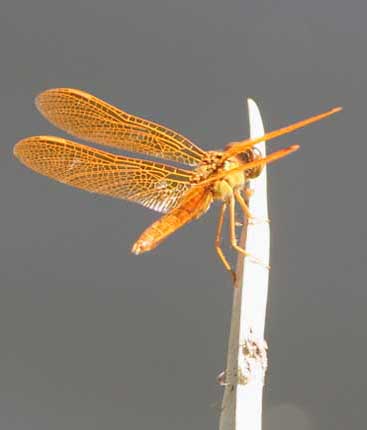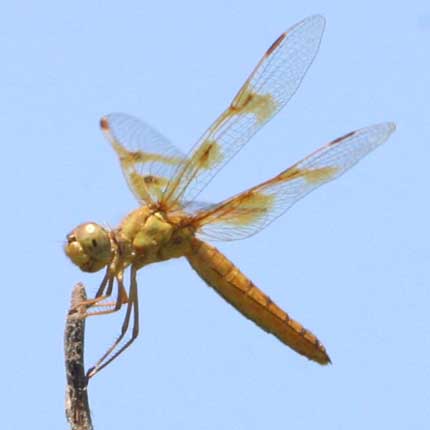| |
|
The Colorado River forms the southeastern boundary
of California, separating it from Arizona (in the photo above,
California is left bank, Arizona is right bank). Much of the wonderful
riparian habitat along the river is now gone, but there are many sites
for odes. Some locales, such as Palo Verde County Park in Imperial
County (right), are right on the edge of the river itself. One checks
the little inlets and eddies for dragonflies.
Several southern California specialties are best
found here. Perhaps the most important is Double-striped Bluet
(male below, 28 May 2007 at Palo Verde Co. Park). This is a tiny
one-inch long bluet (so the photo is about 9X life-size) that is a
recent colonist at the River. It has since spread to the Imperial
Valley in small numbers, but only on the Colorado is one confident that
it can be found.
|
|
|
|
|
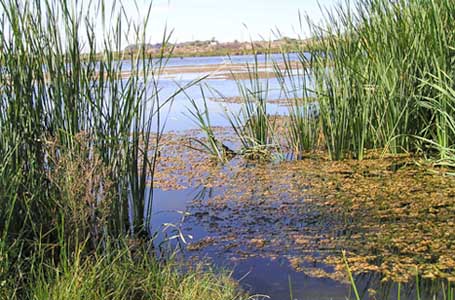 |
The best known locales for odes are just a short
distance back from the river itself, near Imperial and Laguna Dams, on
the California side of the river near Yuma, Arizona. Among these spots
are West Pond (left), Senator Wash Reservoir, Squaw Lake, and adjacent
wetlands.
Citrine Forktail (male below
left; photo from West Pond 13Oct 2007) is another important southeast
California ode found primarily at or near the river. Blue-ringed
Dancer (male below right) is a widespread and common damsel
here and in the Imperial Valley.
|
|
|
|
|
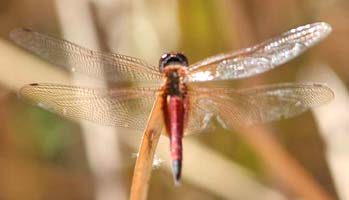 One alluring point about the Colorado River
is the potential to discover rare vagrant odes to California, and even
potential first State Records. So far, October has been the best time
for this. In Oct 2006, those attending "Ode Blitz II" found Striped
Saddlebags Tramea calverti at West Pond — a California first
— and two more were present a few days later. The next week David Blue,
chasing (and missing) the saddlebags, found the State's first Plateau
Dragonlet Erythrodiplax basifusca nearby. One alluring point about the Colorado River
is the potential to discover rare vagrant odes to California, and even
potential first State Records. So far, October has been the best time
for this. In Oct 2006, those attending "Ode Blitz II" found Striped
Saddlebags Tramea calverti at West Pond — a California first
— and two more were present a few days later. The next week David Blue,
chasing (and missing) the saddlebags, found the State's first Plateau
Dragonlet Erythrodiplax basifusca nearby.
Tim Manolis, Rita, and I decided to give West Pond &
vicinity a try in Oct 2007. During our visit on 13 Oct, we also
discovered a Striped Saddlebags (male, right)! The
full story and photos about that find are on a separate
web page.
|
|
|
Even if you don't find a rarity, the Colorado River
odonate fauna is diverse and impressive. Even in mid-October we found
22 species during a 4–5 hour visit to a few spots. For someone who
rarely gets to the desert, seeing the pretty and very tiny wasp-mimic Mexican
Amberwing (above) is always entertaining. Although this
southern species can be found nearer the coast in San Diego County, it
seems in much higher numbers out here on the river.
|
|
Male (above left) 13 Oct
2007 at "Squaw Pond" near Squaw Lake, IMP
Female (above right) 28 May 2007 at Davis Lake, south of Palo Verde Co.
Park, IMP
|
|
|

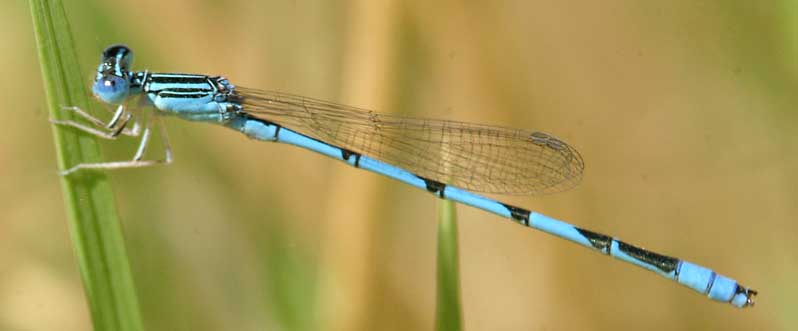
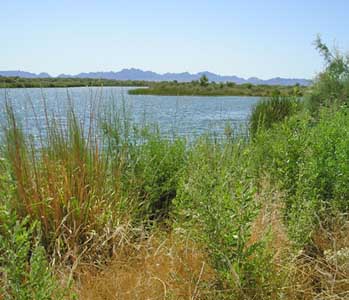


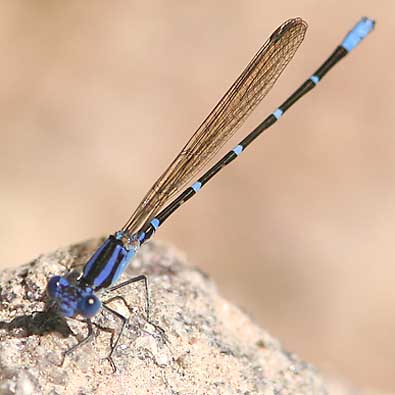
 One alluring point about the Colorado River
is the potential to discover rare vagrant odes to California, and even
potential first State Records. So far, October has been the best time
for this. In Oct 2006, those attending "Ode Blitz II" found Striped
Saddlebags Tramea calverti at West Pond — a California first
— and two more were present a few days later. The next week David Blue,
chasing (and missing) the saddlebags, found the State's first Plateau
Dragonlet Erythrodiplax basifusca nearby.
One alluring point about the Colorado River
is the potential to discover rare vagrant odes to California, and even
potential first State Records. So far, October has been the best time
for this. In Oct 2006, those attending "Ode Blitz II" found Striped
Saddlebags Tramea calverti at West Pond — a California first
— and two more were present a few days later. The next week David Blue,
chasing (and missing) the saddlebags, found the State's first Plateau
Dragonlet Erythrodiplax basifusca nearby.